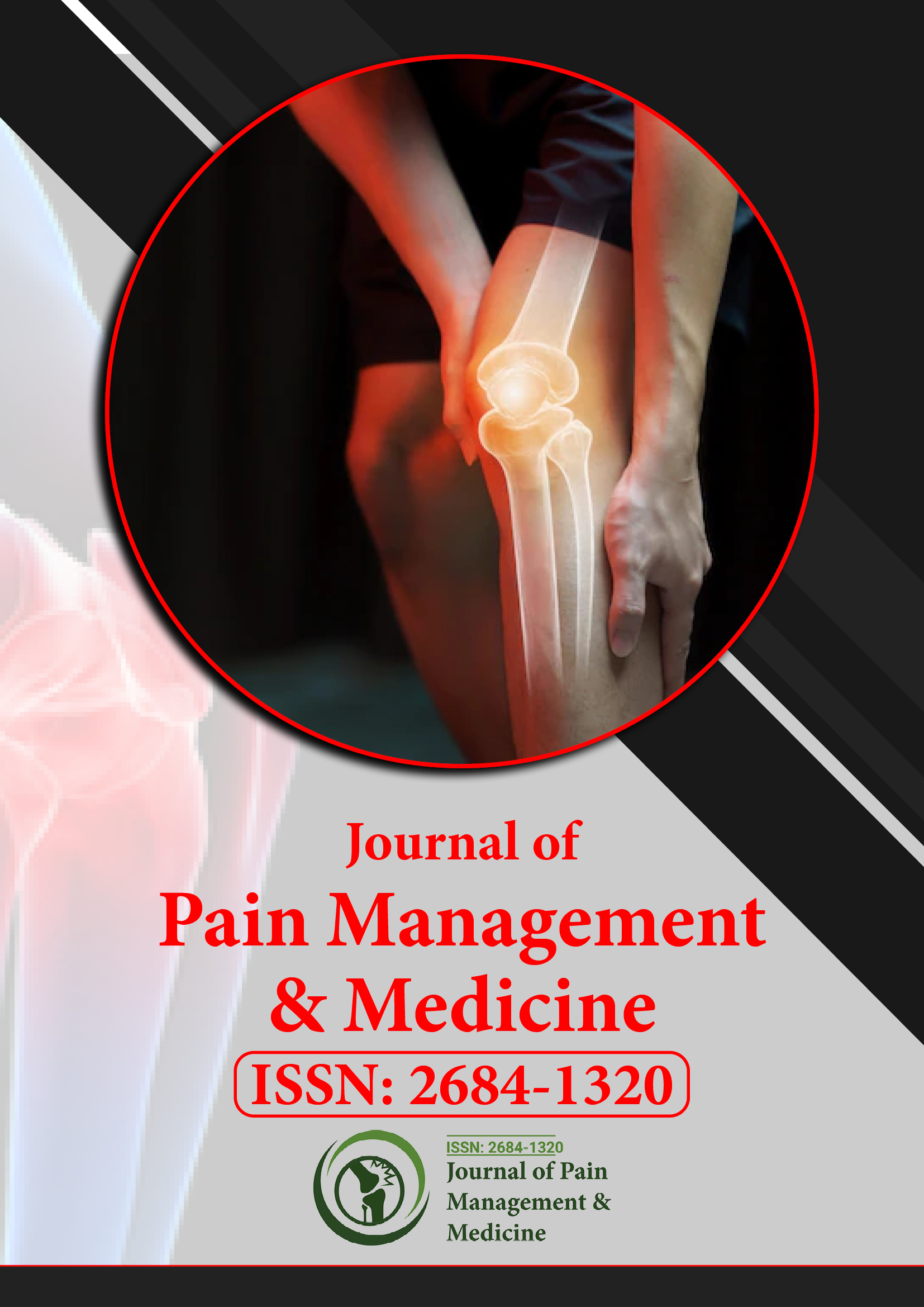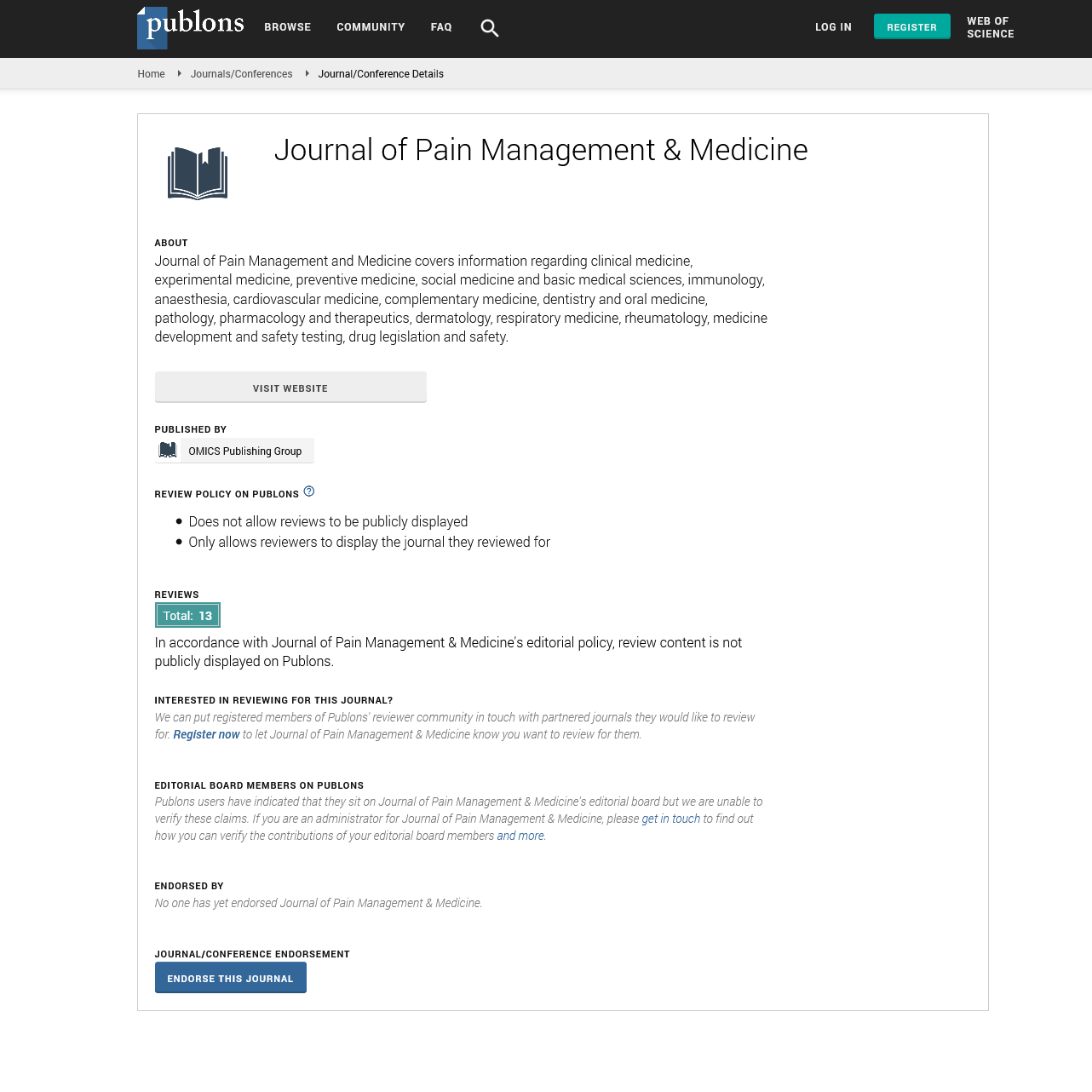Indexed In
- RefSeek
- Hamdard University
- EBSCO A-Z
- Publons
- Euro Pub
- Google Scholar
- Quality Open Access Market
Useful Links
Share This Page
Journal Flyer

Open Access Journals
- Agri and Aquaculture
- Biochemistry
- Bioinformatics & Systems Biology
- Business & Management
- Chemistry
- Clinical Sciences
- Engineering
- Food & Nutrition
- General Science
- Genetics & Molecular Biology
- Immunology & Microbiology
- Medical Sciences
- Neuroscience & Psychology
- Nursing & Health Care
- Pharmaceutical Sciences
Commentary Article - (2022) Volume 8, Issue 6
Associations among Acute and Chronic Pain: Causes and Treatment
Leemans David*Received: 03-Nov-2022, Manuscript No. JPMME-22-19361; Editor assigned: 07-Nov-2022, Pre QC No. JPMME-22-19361 (PQ); Reviewed: 21-Nov-2022, QC No. JPMME-22-19361; Revised: 28-Nov-2022, Manuscript No. JPMME-22-18561 (R); Published: 08-Dec-2022, DOI: 10.35248/ 2684-1320.22.8.189
Description
Musculoskeletal pain is caused by problems with the bones, joints, ligaments, tendons, or muscles. For example, a fracture can result in excruciating pain. Pain can also be caused by a chronic condition such as arthritis. Interact with a healthcare provider if musculoskeletal pain interferes with the regular activities. The right treatment can alleviate pain. The pain can be mild or severe enough to affect the daily activities. Acute pain is described as pain that occurs suddenly and lasts for a short period of time. Chronic pain is characterized by pain that lasts for more than 3 to 6 months.
Types of musculoskeletal pain
The following are the most common types of musculoskeletal pain:
Bone pain: Bone pain is caused by injuries such as bone fractures or other musculoskeletal injuries. A tumor can occasionally cause bone pain.
Joint pain: Joint pain is usually accompanied by strength and inflammation. Many people have found that joint pain improves with rest and continues to worsen to occurrence.
Muscle pain: Muscle pain can be caused by headaches, or injuries. Muscle pain can also be caused by infections or tumors.
Tendon and ligament pain: Ligaments and tendons are difficult tissue parts that connect the joints and bones. Tendon and ligament pain can result from sprained ankles, strains, and muscle strain.
Causes of musculoskeletal pain
Musculoskeletal pain is commonly caused by: Fractures in the bones. Dislocation of a joint (when something forces a joint out of its proper position). Continues to blow to the muscles, bones, or joints. Injuries caused by overload, poor posture, and ligament damage.
Signs and symptoms of musculoskeletal pain
The intensity of the pain probably depends on where it is experienced. The pain in the bones can be plain, sharp, stabbing, or deep. It is usually more painful than muscle or tendon pain. Muscle pain caused by a cramp or powerful muscle contraction it is also known as a charley horse, it can be stressful and specific. Painfully, the muscle can twitch or signed agreement. Tendon pain can be excruciating if it is caused by an injury. It usually gets worse because people move or stretch the affected tendon and feels stronger when a person rest. Joint pain feels like a mild headache. Stiffness and swelling can encompass the tendon pain.
Fibromyalgia causes numerous tender spots all over the muscle. Nerve damage, pins and needles or burning sensations can accompany nerve compression pain. Other symptoms, depending on the source of the pain, and also include: Inflammation, pain and swelling, skin irritation, the sound of the joint cracking or popping. Having difficulty moving the damaged areas, weakness, chronic, sleeping difficulties, causing pain, and flutters or muscle pain of the muscle tissue.
Citation: David L (2022) Associations among Acute and Chronic Pain: Causes and Treatment. J Pain Manage Med.8:189.
Copyright: © 2022 David L. This is an open access article distributed under the terms of the Creative Commons Attribution License, which permits unrestricted use, distribution, and reproduction in any medium, provided the original author and source are credited.

